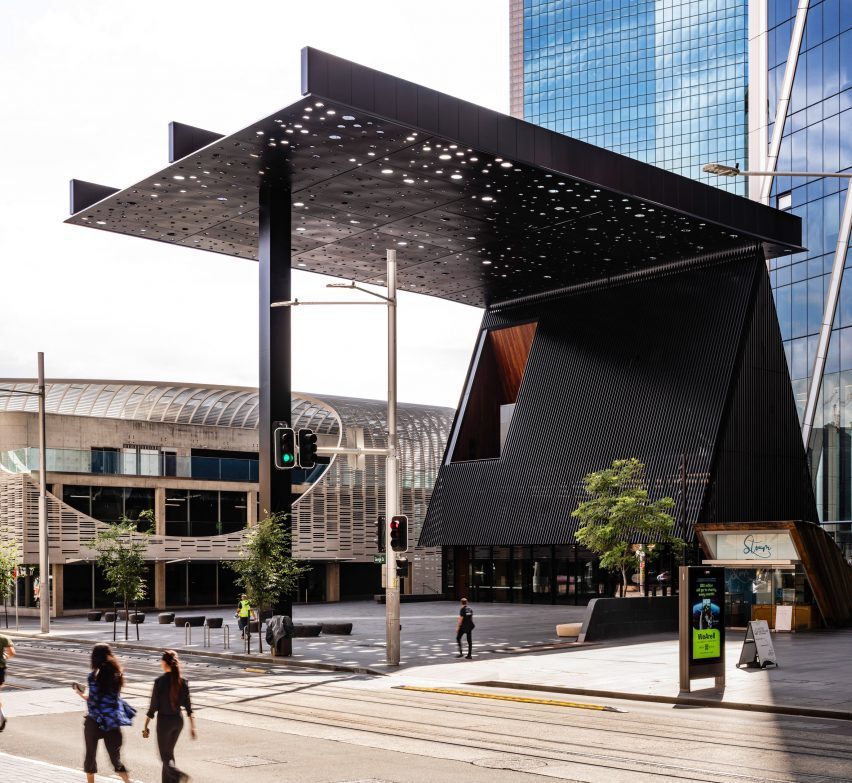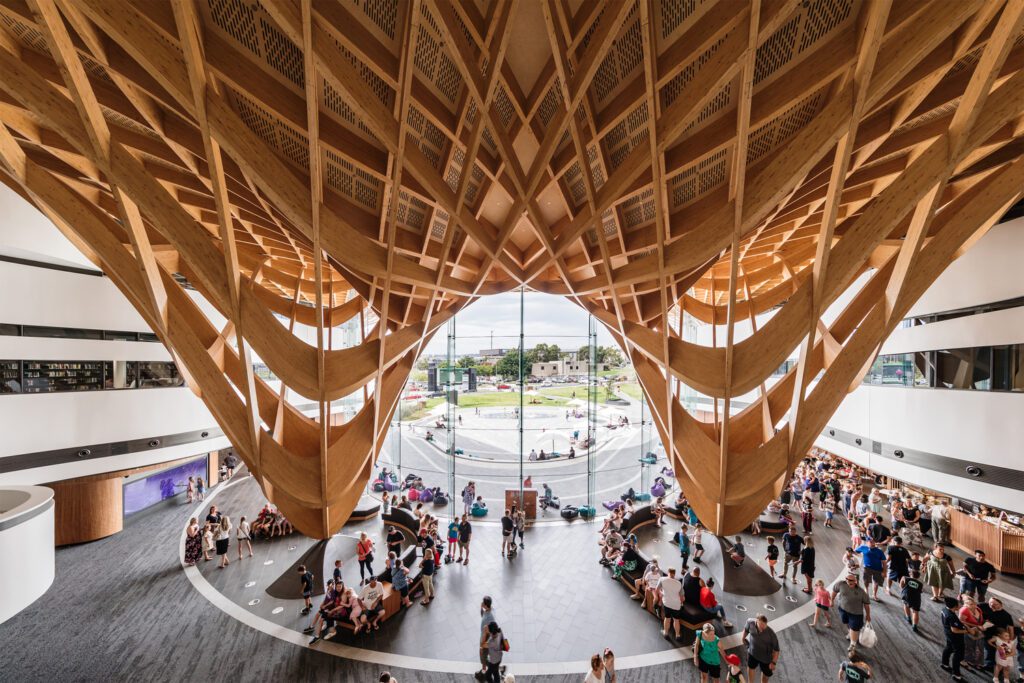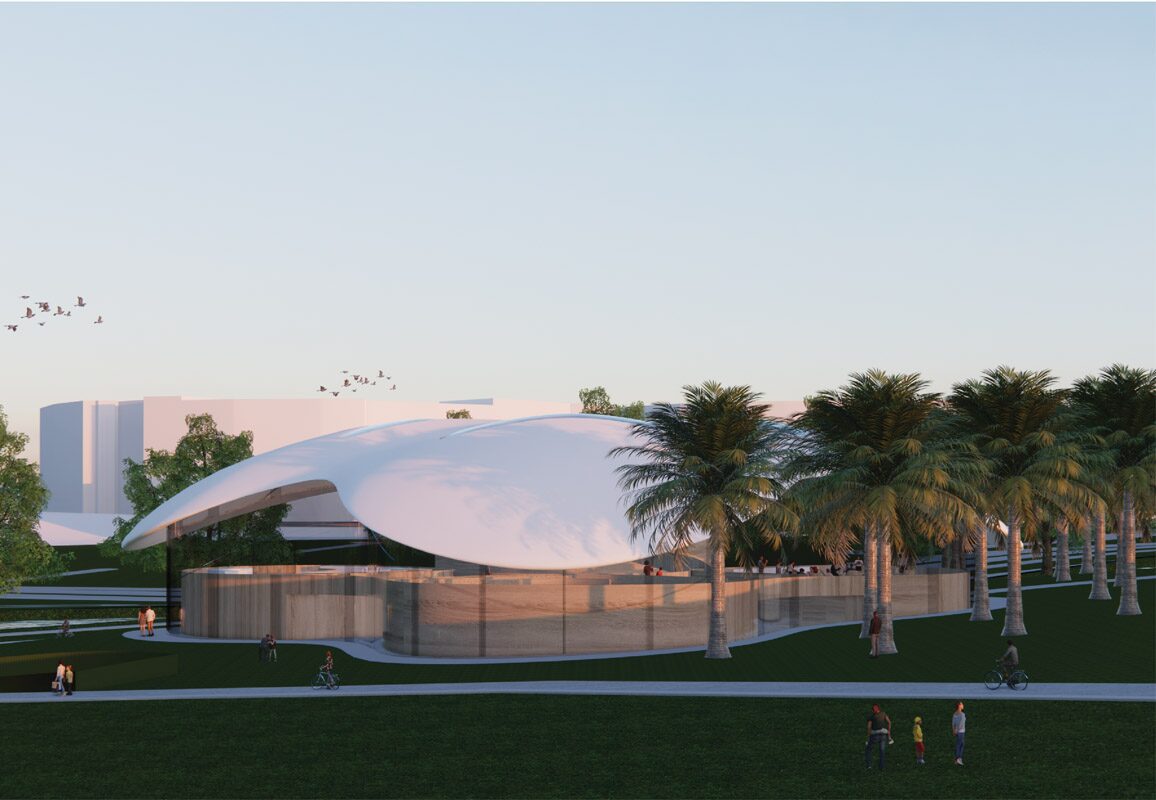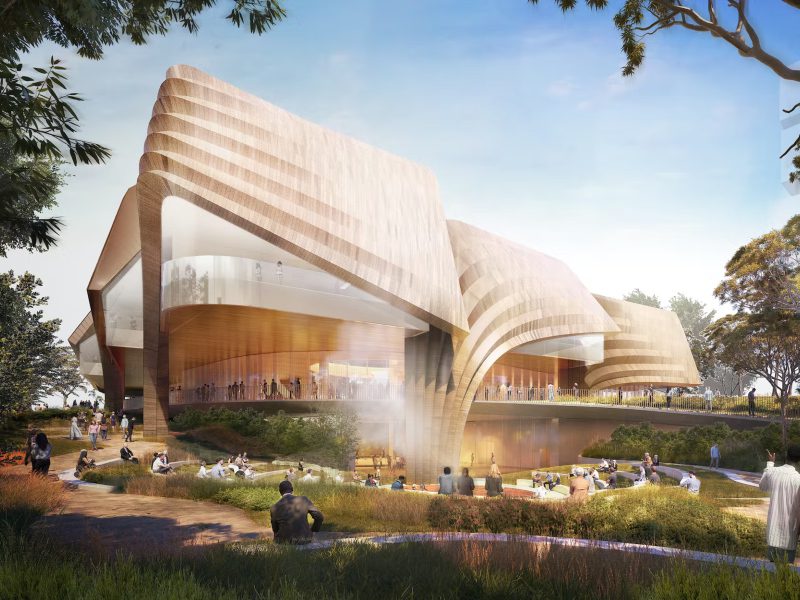First Nations Shaping Australian Architecture
- 4 min read
- October 16, 2023
“Everywhere you build, you’re constructing on Indigenous land,” asserts Jack Mitchell, a designer and researcher with Whadjuk/Balladong Noongar. Despite being home to one of the world’s oldest living cultures, Australia predominantly features imported architecture in its cities.
However, even in the face of the country’s diverse geographical settings, it is evident that there is a growing presence of Indigenous architects, and some remain hesitant to incorporate their cultural perspectives into their architectural work.
Nevertheless, numerous designers actively incorporate Indigenous architectural elements into their designs in Australia, and here are some examples:
George Street Plaza and Community Building

Located in downtown Sydney, the site’s history has been home to Eora people, indigenous to Australia. It features a unique metal canopy designed by Ghanaian-British Architect David Adjaye of Adjaye Associates and Australian Indigenous artist Daniel Boyd, symbolizing the contrast between Indigenous communities and colonizers. Circular patterns on the canopy appear on the plaza’s pavement using steel circles and glass skylights, brightening a bike facility below with natural light.
Bunjil Place

Located in Narre Warren, Victoria, this building serves as an arts facility, a library, theater, exhibition space, and a flexible work/service area. Leading architectural firm, Francis-Jones Morehen Thorp, made its façade resembling the Bunjil Eaglehawk, paying homage to the culture of the Boon Wurrung people from the Kulin Nation, the land’s original owners. Cathy Adams’ 2001 artwork also plays a significant role in the building’s theme. With these guiding principles, this civic structure fosters inclusivity in public spaces, reflecting and embracing diversity.
Nardoo

Nardoo, The Gallery of Aboriginal Art & Landscape, is located on Melbourne’s city-parkland border, overlooking the Yarra ‘Birrarung’ river. The deep Indigenous Australian connection to this land is profound, thus the project developers, Parisa Bazargani, PARISAIKA and Swinburne University of Technology, sought to “reframe” Melbourne with memory architecture, incorporating Aboriginal art to convey the place’s historical and cultural narrative.
Tarrkarri – Centre For First Nations Cultures

‘The future’ is underway on Kaurna land, with a strong connection to Aboriginal heritage. Designed by Diller Scofidio + Renfro in collaboration with Woods Bagot, the design is based on the Aboriginal theory of elements that link people to places including the earth, land and sky. The woven façade were also inspired by the aboriginal’s temporary shelter called ‘wurlie’ and ‘humpy’. Expected to be completed in 2025 in Adelaide, this project will stand as the inaugural Center for First Nations Culture.
Social justice design entails maximizing opportunities and amplifying the voices of Indigenous people. Everyone has a crucial role to play in this development if we only take the time to listen, look and understand our origins and culture. As Greenaway asserts,“The power of well-considered architecture comes with responsibilities and obligations.” At the end of that, it all comes back to shared humanity.
Was this insightful? Give a thumbs up or post a comment.
For more of our blogs, check out https://mgsglobalgroup.com/blog/.




